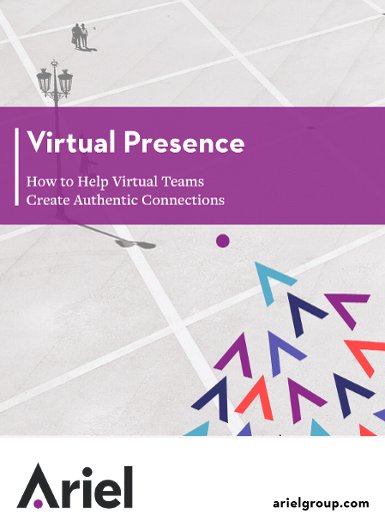How to Prepare Your Leaders for Remote Management

Meet Ella, the Marketing Manager of a global organization headquartered in Atlanta, GA. Ella leads a team of ten whose direct reports account for an additional 20 people. Due to budget constraints, the team can only come together twice per year for face-to-face contact, leaving the majority of Ella’s management work to be done virtually. To keep up with wider organizational change initiatives, Ella is tasked with reaching demanding marketing objectives, but she is having trouble keeping her team connected and engaged from afar.
Ella’s situation is far from unique, and with the increasing popularity of remote work, she certainly won’t be the last to experience this type of growing pain. According to a recent report, remote work is “one of the biggest drivers of transformation in the workplace,” and location independence will only continue to gain traction in the years ahead to accommodate a more globalized, tech-forward workforce.
To succeed, those tasked with leading teams will need to find a way to adjust quickly. Here are three things to keep in mind to increase the capacity of your remote managers.
Make communication count
What was once as simple as walking down the hall to get a status update on a project is now riddled with logistical challenges for your remote managers. And although 52% of remote employees interact with their direct supervisor on a daily basis, another 34% are only communicating once per week. To account for this absence of regular contact, remote managers must
- set clear project expectations from the start
- strive for consistency, efficiency, and clarity in all communication with team members.
To help management thrive under these global conditions, their written, virtual, and cross-cultural communication skills should be developed on a consistent basis. More on that here.
Develop your team’s virtual presence
While the notion that remote management requires an entirely new set of management skills than traditional management is a misconception, anyone managing remotely will need to adopt a more proactive approach to keep virtual employees engaged, connected, and aligned with organizational goals.
At Ariel, we define virtual presence as the ability to authentically connect with a virtual audience so that they feel included, engaged, and inspired. One way to increase virtual presence is to use video whenever possible. This allows for the use of facial expressions and body language—and actually boosts productivity and discourages multi-tasking.
You can learn more about virtual presence and why it matters for your organization’s bottom line right here.
Teach managers to build relationships from afar
It can’t all be about project guidelines and organizational alignment, though—that’s only half the battle for effective remote management. It can be easy for remote team members to feel left out or forgotten. To increase buy in and ensure engagement, remote managers must find a way to form strong bonds with their remote team members.
Building rapport inspires trust and ensures the best possible outcomes from remote teams. A key to this is making time to “check in” with your remote team members. Whether this is five minutes at the top of a meeting or a full hour every week, building in time to talk about how they’re personally doing reminds your team members that you’re more than just their boss. Checking in before a meeting also helps you both get on the same page and in doing so, saves time! Here are five more ways to connect with virtual colleagues.
A growing virtual workforce creates major implications for the people responsible for leading their teams to success. See how Ariel helped one global organization improve remote collaboration and develop stronger leadership in this case study. Or, if you’re ready to hear more about Ariel’s customizable programs, get in touch with our Learning Solutions Team today.
